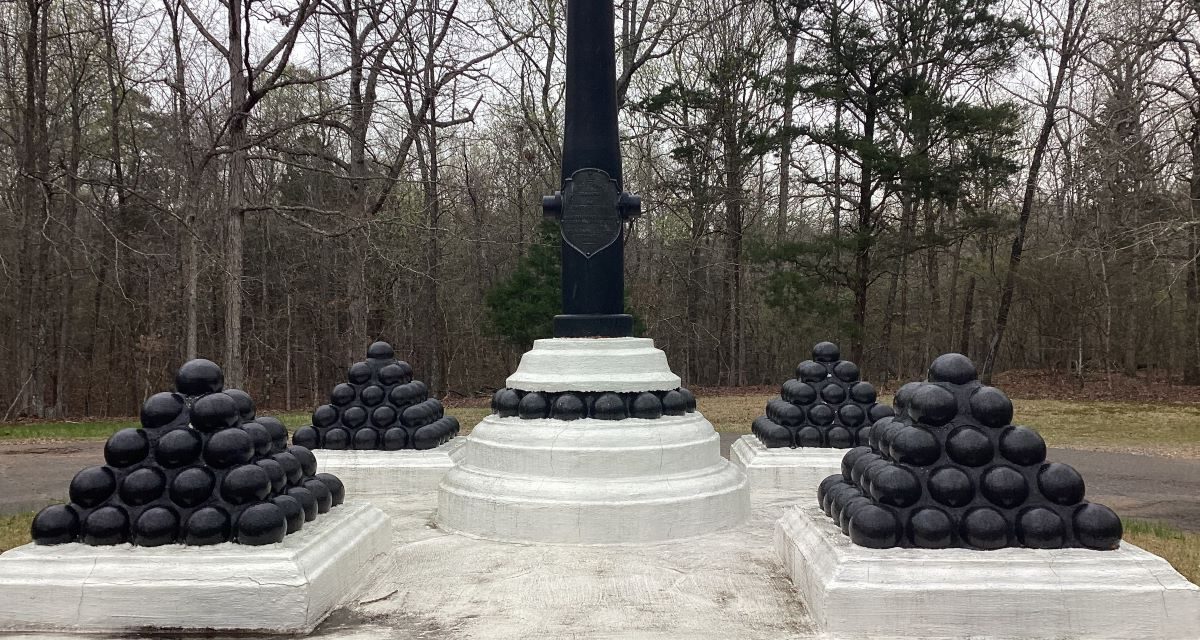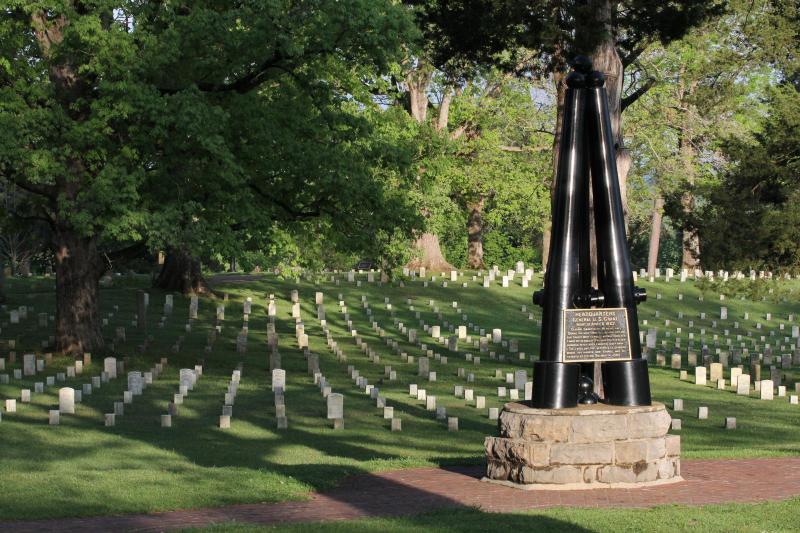By John Branston
You can’t go all noir when you drive to Shiloh in the spring even if it was one of the bloodiest battles of the Civil War. The place is just too pretty with all those green fields, redbuds, dogwoods, split-rail fences, and the Tennessee River.
From Memphis you take Highway 72 through Corinth, Highway 57 through Collierville or Highway 64 through Adamsville. Which ever one you choose it takes about two hours and you can stop, cruise, haggle and lose on a manufactured home, a 1960 Elvis album, a Kerry for President button or a giant metal rooster.
The battle was on April 6 and 7, 1862. But my buddy Mike and I are Civil War buffs and were eager to see what real fighting men fought for their lives instead of the right to wear a MAGA hat or a shirt saying Muck Fusk. It was raining lightly but you never know what April will bring. The first day of the battle in 1862 it poured then turned to sleet at night.
So much for reenactments in itchy uniforms and carrying empty muskets. Mike is a hardcore, if he is of a mind to, and I am a farb, in the memorable words of Tony Horwitz in his book Confederates in the Attic. (Hardcores hike 20 miles, sleep in groups on the bare ground and “spoon left” or “spoon right” to keep warm. Farbs fake it, and drive cars from Tour Stop 1 to Tour Stop 16.
“Anybody can put on a uniform and come on out,” the guy at the visitor center said when I asked about camping. Maybe next year.
Shiloh is about a week behind Memphis as far as things in bloom, but Bloody Pond, the Peach Orchard and Pittsburg Landing will not disappoint. Catfish are jumping. It smells like a paper mill, however, due to the one in nearby Counce. There are worse things. No less an authority that the late Shelby Foote said it was his favorite Civil War battlefield.
Gen. Albert Sidney Johnston, commander of the Rebels, was killed the first day of the battle by a mini-ball (also spelled “minie) in the leg that passed through his femoral artery. He bled out. A timely well-placed tourniquet might have saved his life if not his leg. Johnston is still the highest ranking American military commander ever to die in combat. Given his prominence, his monument is rather humdrum, consisting of a white base, four stacked pyramids of cannon balls at the corners, and a black shaft in the middle. (See photo at top of this post.)
The Battle of Memphis was in June of 1862, two months after Shiloh. The Blues won. It was mainly a naval battle highlighting the effective use of rams to drive old Dixie and her ships down.
If a commander is described by historians as “brave but rash” it probably means his men were slaughtered.
The novel The Red Badge of Courage is sometimes said to be based on Shiloh. Its author, Stephen Crane, was born in 1871 and died at the age of 29.
Memphis author/novelist/historian the sonorous Shelby Foote wrote a novel titled Shiloh. His starring role in the PBS Ken Burns series on the Civil War is still one of the best things on television.
The average age of fighting men in blue and butternut was a mere 20 years. Some drummer boys were in their early teens. They were holding joint reunions well into the 20th century.
Officially at least, there were no Black soldiers at Shiloh. They could not enlist until Lincoln issued the Emancipation Proclamation in 1863. The number of Blacks forced to fight for one side or the other is not recorded. Nor were there any women in the fight, although nobody was looking closely or counting.
Lincoln, a Republican, was elected with only 39 percent of the vote in a four-man race. The turnout was in impressive 82 percent but women did not get the constitutional right to vote until 1920 and Blacks until 1965.
Many if not most of the estimated 3500+ dead at Shiloh were bayoneted. Infantry often fought at close quarters because smooth-bore muskets were only effective at about 100 yards. Rifled guns and cylindrical ammo improved that deadliness. A quick death was something of a blessing. The wounded lay in the fields howling for help for hours before dying.
The famously infamous Nathan Bedford Forrest fought at Shiloh as well as Brice’s Crossroads and Fort Pillow. His cavalry was assigned to picket duty at Shiloh the first night and he grumped that the Rebels would be “whipped like hell” (Foote: The Civil War, Volume 1) if they did not attack forthwith. The equestrian statue of Forrest on Union Avenue in Memphis was removed in 2017.
It is illegal to use a metal detector to look for artifacts or remove artifacts from Shiloh and other national military parks. The only private establishment at Shiloh is a house flying a Confederate flag and sporting a sign saying “Mini balls for sale.”
The “Woke” people of our time had their counterpart in the “Wide-Awakes” of 1860. Linguist John McWhorter has written that the names have different origins despite their similarities. Bruce Catton (The Coming Fury) writes that Wide-Awakes were “faintly military organizations of young Republicans” who liked donning uniforms, parading “for the sake of parading” while playing instruments, spreading rumors and truths, and getting attention.
Sound familiar?
**
To read more of John Branston’s posts, go to categories on the right side of this blog’s home page and select his name.
John Branston has been contributing to Smart City Memphis for four years. Before that he wrote columns, breaking news, and long-form stories for The Commercial Appeal, Memphis Flyer, Memphis magazine, and other print and online publications. He is author of the books Rowdy Memphis (2004) and What Katy Did (2017). He is a journalist and opinion writer. His stories are based on reporting, interviews and quotes supported by notes or a tape recorder. He has written about people who made Memphis what it is, for better and worse; about sleep issues and depression; about racquet sports; and about travel in the South and West. Tom Jones, creator of the Smart City Memphis blog, is his invaluable publisher, copy editor, tech support, and rewrite man.



